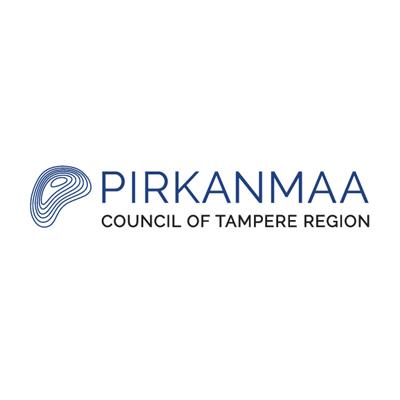Tampere Region
Updated on 15.10.2024
The Council of Tampere Region operates as a regional development and planning authority. It supports and pursues the interests of the 23 municipalities located in the region, businesses, research and education sector, and inhabitants. The Council carries out planning and analyses, and it promotes the region’s interests nationally and internationally. The Tampere Region is also known as NB Pirkanmaa.
Circular Pirkanmaa, as the new regional development centre focusing solely on circular economy, is responsible for development in three main themes: housebuilding; infrastructure building; and industrial material flows. Circular Pirkanmaa focuses its tangible development actions especially towards municipalities, municipality-owned companies and the private sector.

More information
Strong cooperation between regional actors, municipalities, businesses, R&D, communities, and other stakeholders is the key for creating sustainable and resilient circular ecosystems at local and regional level. The Council of Tampere Region and Circular Pirkanmaa (Regional Circular Economy Development Centre), are driving systemic change in the region’s circular economy operating environment. Therefore, our focus is on three different key themes: strategic level, ecosystem development level, and operational level.
Circular systemic solution
Systemic Change Through Public Private Cooperation
The circular systemic solution is focused on the development of the operational model of the Tampere Region Circular Economy Development Centre (Kiertotalus Pirkanmaa). Additionally, it aims at developing the regional strategic operating environment and circular economy ecosystem to speed up systemic change. It intends to tackle circular economy issues within the region and test if public actors and municipality-owned companies can adapt to foster a circular economy market. The centre will provide services under three key areas:
- House Building: develop market dialogues among key public and private stakeholders, and develop criteria and tools for land allocation processes that prioritise sustainability and circularity. Additionally, develop models for the reuse of intact demolition materials, drawing inspiration form the Orivesi and Nokia cases.
- Infrastructure Development: develop market dialogues among key stakeholders, analyse the current public procurement processes, and develop improved procurement processes that foster systemic change toward a circular economy. This effort will draw lessons from the Yliopistonkatu circular economy street procurement.
- Industrial Material Flows: identify waste streams,determine focus areas and gather the necessary experts to develop actionable strategies. The project will leverage insights from the ECO3 industrial CE area in Nokia.
The centre will develop tangible, case-driven criteria, tools, and models to facilitate systemic change within the public and private sector. The centre will also gather existing pilot results and examples, ensuring thatthis information is easily accessible through its websites and experts, thereby minimising the need to re-invent the wheel.
Objectives
House building:
- increase the reuse of construction materials;
- guide planning and land use towards circular economy practices;
- create circular economy expertise in house construction through peer learning and stakeholder engagement;
- disseminate best practices and tools to support a new circular operating environment.
Infrastructure development:
- guide street and land construction planning and execution towards circular economy solutions;
- produce and implement new circular economy procurement models and criteria for public infrastructure projects;
- promote material reuse in construction;
- facilitate procurement development, sharing of best practices, training and peer learning activities and the development of tools to allow for a new operating environment and relevant circular processes.
Industrial Material Flows:
- identify the most impactful materials in the region and channel their use towards a circular economy together with the most prominent regional operators;
- increase the regional material self-sufficiency and reduce CO2 emissions associated with material consumption;
- create new business opportunities in the circular economy sector.
Systemic nature
The circular systemic solution targets the residential and industrial development sectors by promoting circular construction, material reuse and sustainable planning practices. By focusing on these areas, the circular solution seeks to increase the reuse of construction and industrial materials, including side streams, and guide urban land use planning towards circular economy processes. This approach aims to transform how materials are sourced, used and recycled, leading to more sustainable urban development.
A key component of the solution is the development of an Industrial Material Flow Reuse Symbiosis service, which will be based on the findings of a regional material flows analysis and expert group consultations. This service will enhance regional self-sufficiency and reduce material consumption, with an initial focus likely on plastics, a critical material in need of circular solutions.
Key stakeholders include municipalities and municipality-owned, local businesses, research institutions and academia. Expert organisations, ministries and European Commission representatives and decision makers will also play a crucial role in shaping and implementing the circular solution.
Expected impact
The expected impacts include:
- increase the reuse of construction materials, and thus reduce extraction and related CO2 emissions;
- reduce CO2 emissions associated with material consumption within industrial sectors, while offering new business opportunities to companies.
The Circular Economy in the city/region
Link to existing circular economy strategy and/or action plan: https://pirkanmaa.mediafiles.fi/catalog/Pirkanmaa/r/2085/viewmode=previewview/fc=15%3A548
The Council of Tampere Region and Circular Pirkanmaa, together with other regional actors, have been actively participating in the national policy instrument process known as the Circular Economy Green Deal, coordinated by Finland’s Ministry of the Environment and Ministry of Economic affairs and Employment.
As a result of the process, circular economy transition and solutions are integrated into the region’s Climate Neutral Roadmap, which was updated in June 2024. Therefore, the Circular Economy Action Plan (CEAP) is now part of the climate plan.
The original Climate Neutral Roadmap was published in 2020, identified circular economy as one of the six main themes. Additionally, circular economy principles are embedded in the regional programme including Research and Innovation Strategies for Smart Specialisations (RIS3).
The National Circular Green Deal process is ongoing with a strategic commitment for the region expected to be signed in fall 2024. Additionally, other regional actors and municipalities are considering signing their own more targeted commitments.
Leading organisation
Council of Tampere Region
Unit/department/section
Regional development
Participation in other relevant initiatives
Circular Pirkanmaa




